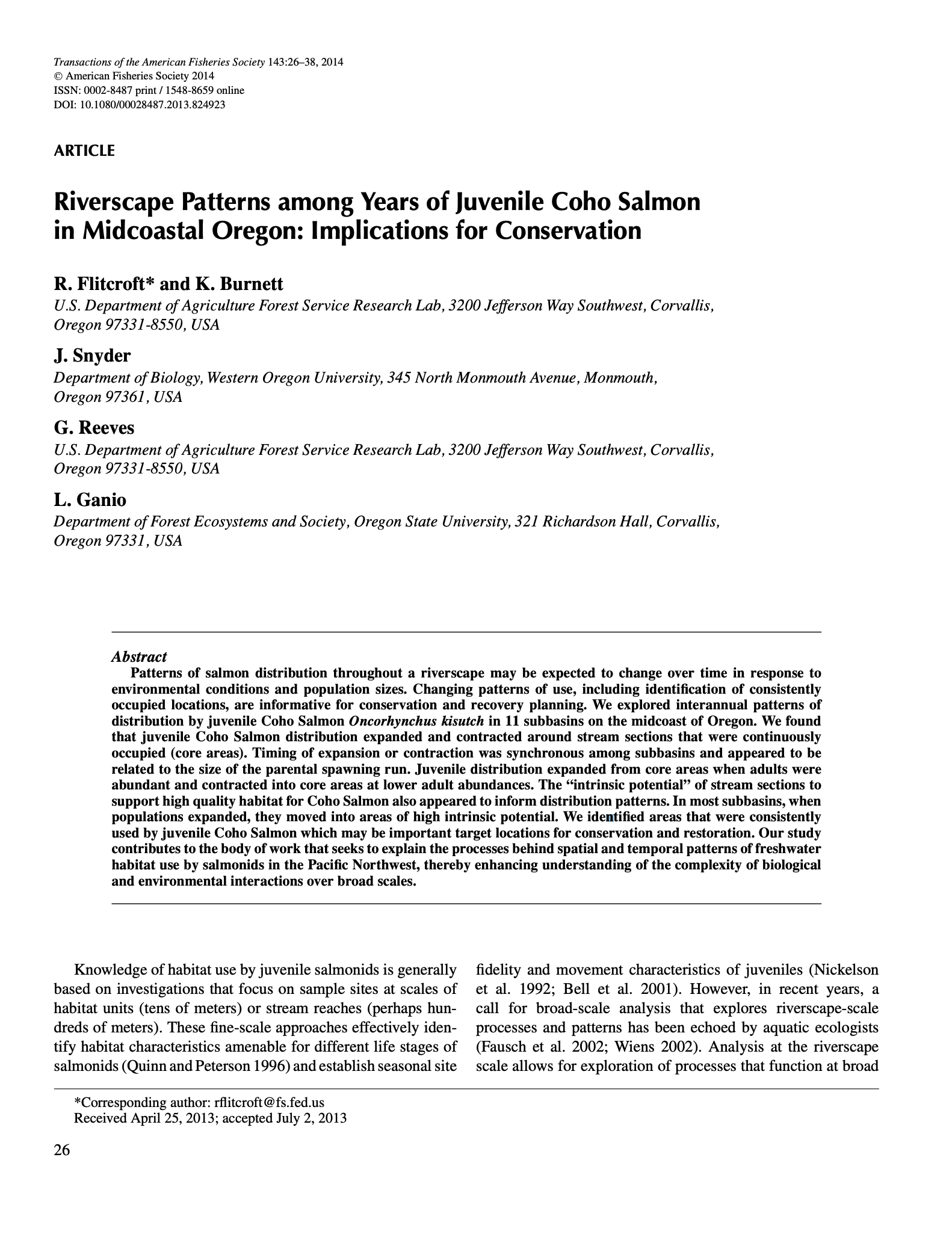
Patterns of salmon distribution throughout a riverscape may be expected to change over time in response to environmental conditions and population sizes. Changing patterns of use, including identification of consistently occupied locations, are informative for conservation and recovery planning. We explored interannual patterns of distribution by juvenile Coho Salmon Oncorhynchus kisutch in 11 subbasins on the midcoast of Oregon. We found that juvenile Coho Salmon distribution expanded and contracted around stream sections that were continuously occupied (core areas). Timing of expansion or contraction was synchronous among subbasins and appeared to be related to the size of the parental spawning run. Juvenile distribution expanded from core areas when adults were abundant and contracted into core areas at lower adult abundances. The “intrinsic potential” of stream sections to support high quality habitat for Coho Salmon also appeared to inform distribution patterns. In most subbasins, when populations expanded, they moved into areas of high intrinsic potential. We identified areas that were consistently used by juvenile Coho Salmon which may be important target locations for conservation and restoration. Our study contributes to the body of work that seeks to explain the processes behind spatial and temporal patterns of freshwater habitat use by salmonids in the Pacific Northwest, thereby enhancing understanding of the complexity of biological and environmental interactions over broad scales.
